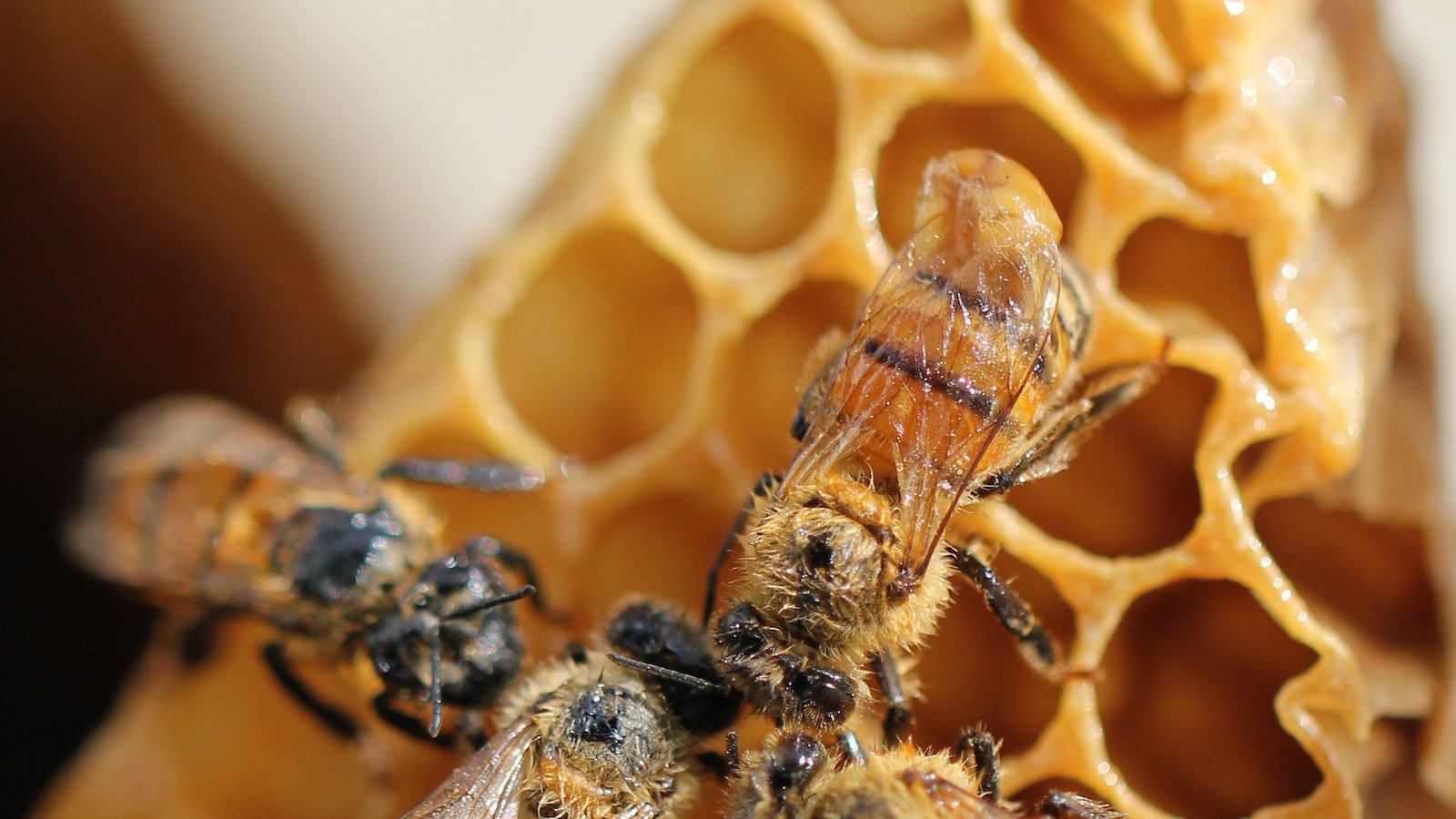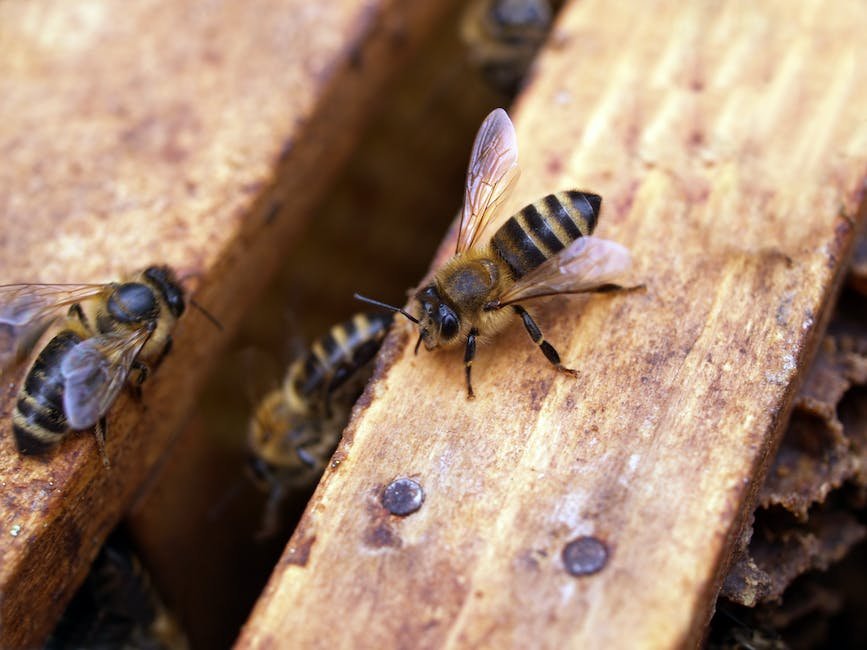Bees buzzing about their business, diligently collecting nectar, creating intricate honeycombs, and maintaining their harmonious social hierarchy—these are the captivating scenes we often associate with the fascinating world of beekeeping. However, as the bee population continues to thrive under the expert care of dedicated beekeepers, the challenge of hive overcrowding arises. A congested hive can lead to a myriad of complications, including aggression, swarming, and diminished honey production—a conundrum that requires a delicate touch and strategic planning to resolve. So, how can beekeepers identify the signs of hive overcrowding and implement effective solutions to alleviate the bustling commotion within their apiaries? In this article, we unravel the mystery and guide you on a journey towards achieving a balanced and thriving honeybee habitat.
Table of Contents
- Recognizing the Signs of Hive Overcrowding: A Comprehensive Guide
- Effective Solutions to Address Hive Overcrowding
- Optimizing Hive Health and Productivity
- Creating a Proper Space Management Strategy
- Practical Steps for Avoiding Hive Overcrowding
- Q&A
- To Wrap It Up

Recognizing the Signs of Hive Overcrowding: A Comprehensive Guide
Keeping a close eye on the condition of your beehive is crucial for maintaining a healthy and productive colony. One common issue that beekeepers should be aware of is hive overcrowding. When a beehive becomes overcrowded, it can lead to a range of problems, such as decreased honey production, increased swarming, and even potential health issues for the bees. This comprehensive guide aims to help you recognize the signs of hive overcrowding so that you can take appropriate actions to ensure the well-being of your buzzing friends.
Signs to Watch Out For:
1. Decreased honey production: An overcrowded hive may experience a decline in honey production as the bees struggle to find enough space for storing nectar. Keep an eye on honey stores and make note of any significant decreases.
2. Congestion at the hive entrance: Observe the entrance of the hive for congestion. If you notice a considerable number of bees queuing to enter or exit, this could be a sign that your hive is overcrowded.
3. Frequent swarming: Swarming is a natural reproductive process for bees, but an overcrowded hive may experience excessive swarming as the colony tries to establish new colonies elsewhere. Keep an eye out for swarms or queen cells within the hive.
4. Increased aggression: Bees in an overcrowded hive may become more defensive and aggressive, as they perceive threats to their limited resources. If you notice a sudden change in the temperament of your bees, overcrowding could be to blame.

Effective Solutions to Address Hive Overcrowding
Hive overcrowding is a common issue for beekeepers worldwide, but there are effective solutions that can help address this problem and ensure the health and productivity of your hive. Here are some innovative approaches to tackle hive overcrowding:
- Splitting the hive: One of the most straightforward solutions is to divide the overcrowded hive into two separate ones. This can be done by creating a new hive and transferring some frames with brood and bees from the original hive. By doing so, you provide the excess bees with a new home and relieve congestion in the original hive.
- Adding supers: Another strategy is to add additional supers to the hive. Supers are stackable boxes where bees build their wax combs and store honey. By expanding the space available for the bees to work, you can reduce overcrowding. Make sure to monitor the hive closely to determine when it needs more supers and prevent swarming.
- Utilizing queen excluders: In cases where overcrowding is mainly caused by a surplus of brood, using queen excluders can be effective. These devices are placed above the brood chamber, allowing worker bees to pass through but preventing the queen from laying eggs in the upper hive sections. This strategy can help control population growth and relieve congestion.
Remember, preventing hive overcrowding is crucial in maintaining a healthy and productive bee colony. By implementing these effective solutions, you can ensure the well-being of your bees and maximize your honey production.

Optimizing Hive Health and Productivity
In order to maximize hive health and productivity, it is crucial to implement effective optimization strategies. By following these guidelines, beekeepers can ensure the well-being of their hives and achieve optimal productivity levels:
- Create a Balanced Environment: Providing a suitable habitat for bees is essential for their health and productivity. Ensure access to clean water sources and sufficient forage to maintain a diverse diet ensuring adequate nutrition for the colony.
- Practice Integrated Pest Management (IPM): Preventing and mitigating pest and disease issues is vital to hive health. Implementing IPM methods, such as regular monitoring and employing natural controls like beneficial insects or mite-resistant bee strains, can minimize the need for chemical treatments.
- Promote Swarm Prevention: Swarming can reduce hive population and honey production. Regular inspections and monitoring of colony conditions can help identify and manage situations that might trigger swarming. Techniques like providing extra space or performing splits can help prevent this natural behavior.
- Conduct Regular Hive Inspections: Regular and thorough hive inspections help identify potential health issues, such as signs of disease, parasites, or lack of food stores. This allows for timely intervention, preventing further decline in hive productivity.
- Monitor and Optimize Genetics: Breeding queens from colonies with desirable traits, such as disease resistance, docility, and high honey production, can enhance hive health and productivity. Genetic diversity should also be maintained to ensure resilience.
- Provide Adequate Ventilation: Good airflow within the hive is crucial to prevent moisture buildup, which can lead to mold and other potential health issues. Properly spaced frames, screened bottom boards, and ventilation holes facilitate air circulation, maintaining a healthy hive environment.
By implementing these optimization strategies, beekeepers can proactively maintain and enhance hive health while increasing honey production and the overall productivity of their colonies.

Creating a Proper Space Management Strategy
In today’s fast-paced and ever-evolving business world, having a well-defined space management strategy is crucial for success. An effective strategy ensures that your workspace is optimized, maximizing productivity and fostering collaboration among your team members.
To create a proper space management strategy, consider the following key points:
- Identify specific space needs: Begin by understanding the unique requirements of your organization. Analyze the tasks performed, the number of employees, and the nature of their work. This will help you determine the amount and types of workspaces, meeting areas, and common spaces needed.
- Design for flexibility: Recognize that the needs of a modern workplace can change rapidly. Plan for adaptability and incorporate flexible furniture and modular layouts that can be easily reconfigured when necessary. This promotes agility and allows your space to evolve along with your business.
- Incorporate technology: In today’s digital age, technology plays a central role in every organization. Ensure your space management strategy integrates technology infrastructure seamlessly. This includes providing proper connectivity, incorporating digital collaboration tools, and creating dedicated areas for video conferencing or virtual meetings.
By tailored to your organization, you can optimize your workspace, empower your employees, and enhance overall business productivity.
Practical Steps for Avoiding Hive Overcrowding
Ensuring proper hive management is essential to maintain a thriving bee colony. Overcrowding can lead to numerous issues, including decreased honey production, increased stress levels among bees, and a higher risk of disease. To avoid this scenario, follow these practical steps:
1. Regular Hive Inspections
- Perform regular inspections to check on the population size and overall health of the colony.
- Look for signs of overcrowding, such as reduced space for the queen to lay eggs or bees clustering around the entrance.
- Take note of any queen cells or swarm cells, which indicate that the bees are preparing to swarm.
2. Increase Hive Space
- If you notice signs of overcrowding, provide extra space by adding honey supers or additional brood boxes.
- Ensure the frames are properly spaced to allow for ample movement and ventilation inside the hive.
- Regularly check the honey supers and harvest excess honey to prevent congestion.
3. Splitting the Colony
- If the colony is rapidly expanding and overcrowding seems imminent, consider splitting the hive into two separate colonies.
- Create a new hive by transferring frames with brood, honey, and a new queen cell or queen bee to the new colony.
- This method not only helps avoid overcrowding but also promotes colony growth and increases overall honey production.
By following these , beekeepers can ensure the well-being of their colonies and maintain healthy, productive bee populations.
Q&A
Q: What are the signs of hive overcrowding?
A: Signs of hive overcrowding include bees clustering outside the hive, reduced honey production, increased swarming activity, and insufficient space for brood rearing.
Q: What can beekeepers do to prevent hive overcrowding?
A: Beekeepers can prevent hive overcrowding by regularly monitoring colony size, providing enough supers to accommodate honey storage, adding queen excluders, and performing splits to create new colonies.
Q: How can additional space be provided for an overcrowded hive?
A: Additional space can be provided by adding extra supers or brood boxes, depending on the season, and ensuring proper ventilation within the hive to maintain optimal temperature and humidity levels.
Q: Is it possible to reduce overcrowding by limiting the number of eggs laid by the queen?
A: Yes, limiting the number of eggs laid by the queen, either through manipulating queen pheromone levels or using queen excluders, can help reduce overcrowding and swarming tendencies.
Q: What are the consequences of ignoring hive overcrowding?
A: Ignoring hive overcrowding can lead to increased swarming, decreased honey production, increased stress on colony health, and potential loss of the hive if the bees abscond due to lack of space.
Q: Are there any natural remedies to combat hive overcrowding?
A: Yes, natural remedies to combat hive overcrowding include providing empty comb for the bees to build on, creating bait hives to capture swarms, and encouraging the bees to draw out comb on foundationless frames.
To Wrap It Up
In the buzzing tapestry of the hive, harmony is essential for a prosperous honeybee community. Alas, sometimes the delicate balance is disrupted as the airborne citizens multiply, and the once spacious abode becomes a cramped metropolis. But fear not, for as diligent keepers of the hive, we hold the keys to alleviating this encroaching dilemma. With keen observation and swift action, we can guide our buzzing brethren towards a brighter future.
As the hive swells with new additions, nature’s subtle dance signals the onset of overcrowding. The constant hum of discontent grows louder, echoing through the hexagonal hallways. Workers scurry about, struggling to maneuver through the narrowing corridors, tripping over their own mandibles in this claustrophobic chaos. A growing unease permeates the hive, as restless drones and a restless queen yearn for freedom in their intricate labyrinth.
But fear not, dear beekeeper, for we possess the wisdom and tools to appease the bustling masses. Our first duty lies in recognizing the signs of hive overcrowding. Watch for the unusual density within the hive; the restless buzzing and frenzied flight paths that contrast with the once orderly colony. Bees may swarm the entrance, yearning to take flight, perhaps even testing their adventurous spirit by hovering on neighboring branches. These are nature’s signals that urgent intervention is necessary.
Having unraveled the enigma of overpopulation, we embark on the journey towards resolution. Our quest begins with providing room to grow, expanding the hive’s territory. Prepare additional brood boxes, spacious sanctuaries that tempt the bees with larger chambers and unlimited possibilities. Nurture the growth of a strong queen, encouraging her to lay eggs in new frames, as her prolific nature sustains the heart of the colony.
In the exquisite ballet of relocation, we deploy our tools of manipulation, coaxing and guiding, yet ever-mindful of the fragile harmony. Now is the time for strategic splits, forging new colonies from the excess population. Gently transfer frames with brood, bees, and resources to their new home, offering an opportunity for rebirth and rejuvenation. From a single bustling hive, we can harvest two, creating a symphony of colonies that continues to sing in harmony.
And remember, dear beekeeper, our duty lies beyond providing ample space. As stewards of the hive, we must ensure an abundant food supply, diligently monitoring nectar and pollen availability. Aid their journey towards a bountiful harvest, for it is with generous sustenance that they learn to coexist harmoniously within their newfound territories.
With our humble guidance, the hive’s overcrowded tale finds a happy ending. We harmonize the colony, restoring order amidst the bustling horde. Our intervention and understanding serve to quell their anxieties, transforming the once cramped abode into a thriving metropolis. The buzzing returns to a tranquil hum, and the air becomes fragrant with the diligent labor of contented bees.
In the grand tapestry of life, it is our ceaseless care and attention that nurtures these tiny wonders. Let us be wise stewards of our buzzing companions, honoring the symphony they create and the sweet rewards they return. Together, we shall forever celebrate the beauty of coexistence, forever ensuring harmony within the hive.
As an affiliate, my content may feature links to products I personally use and recommend. By taking action, like subscribing or making a purchase, you’ll be supporting my work and fueling my taco cravings at the same time. Win-win, right?
Want to read more? Check out our Affiliate Disclosure page.


